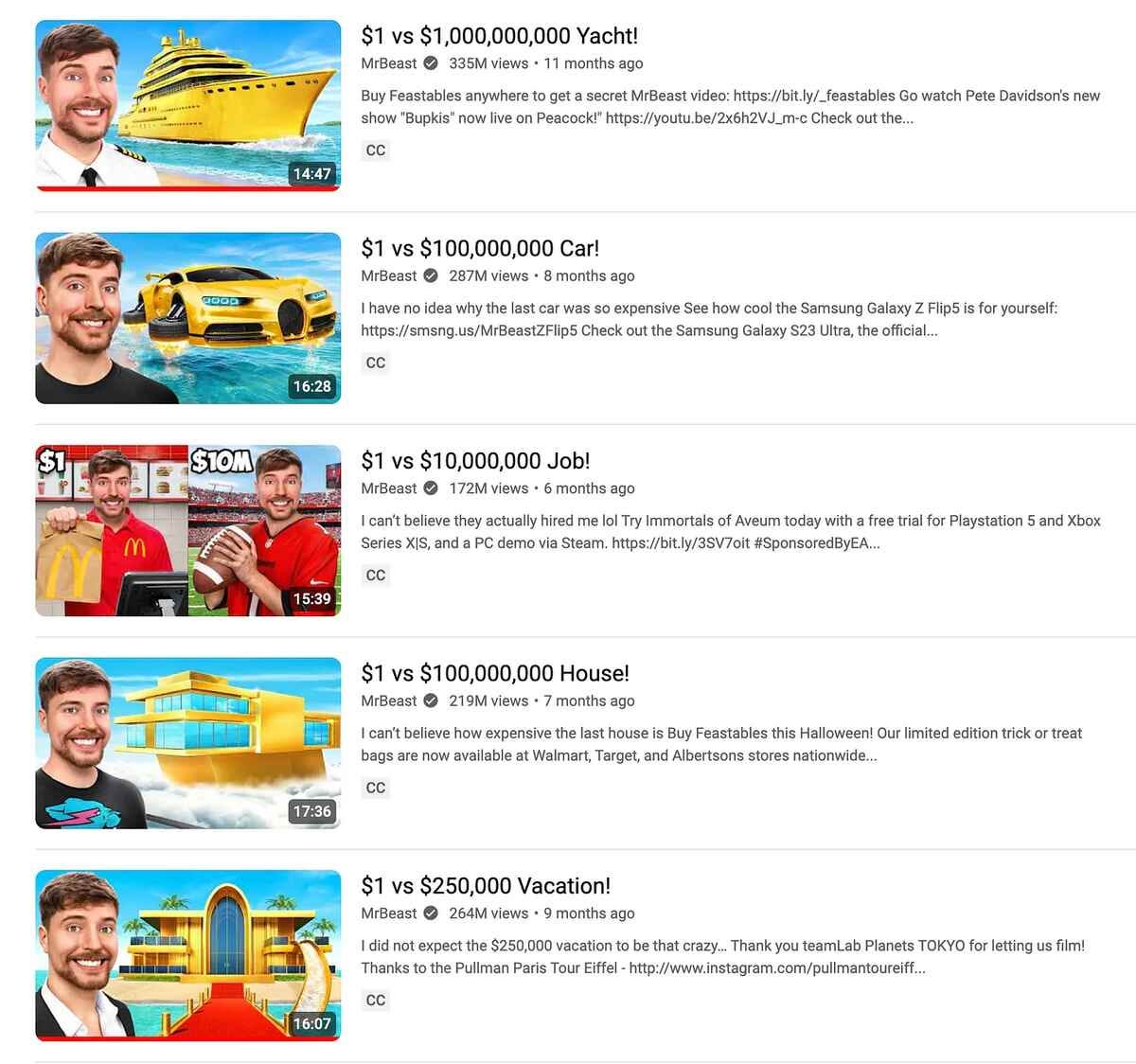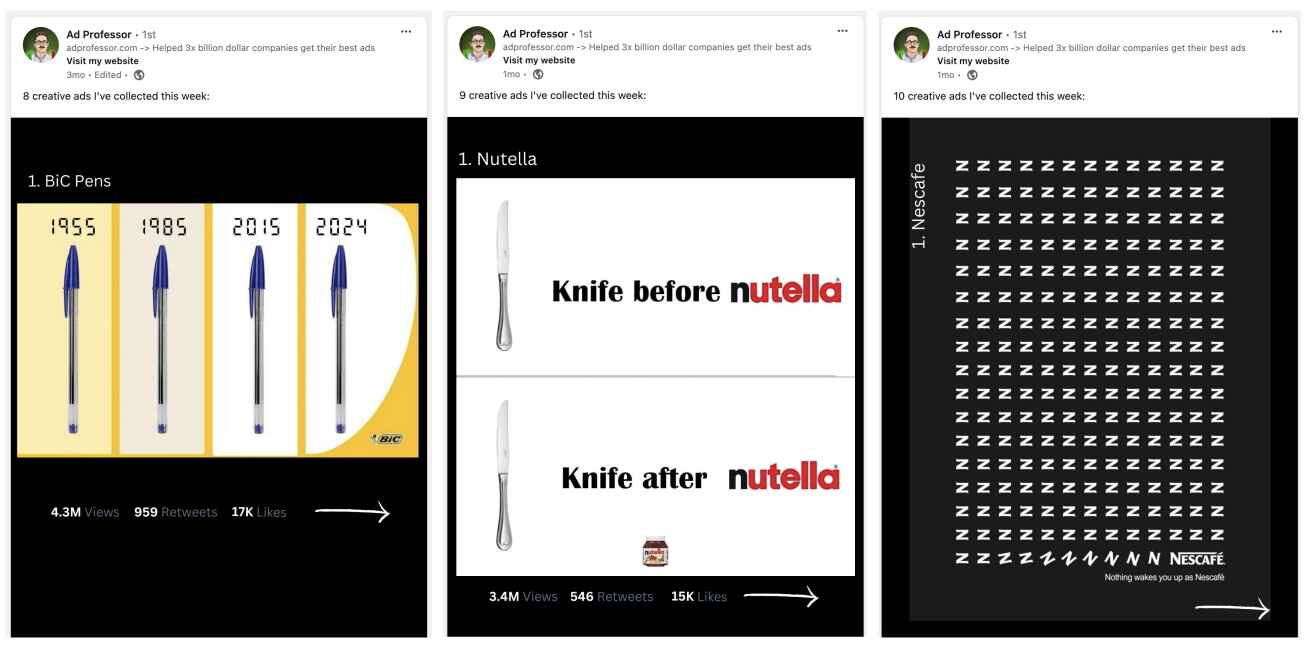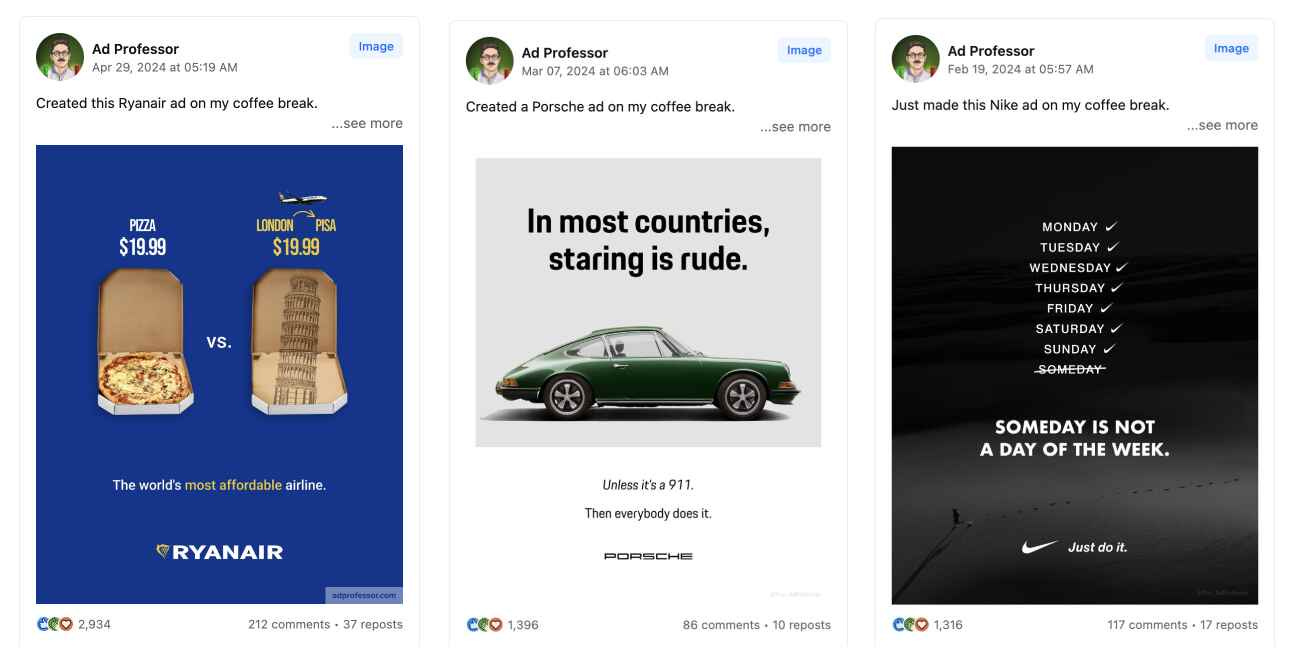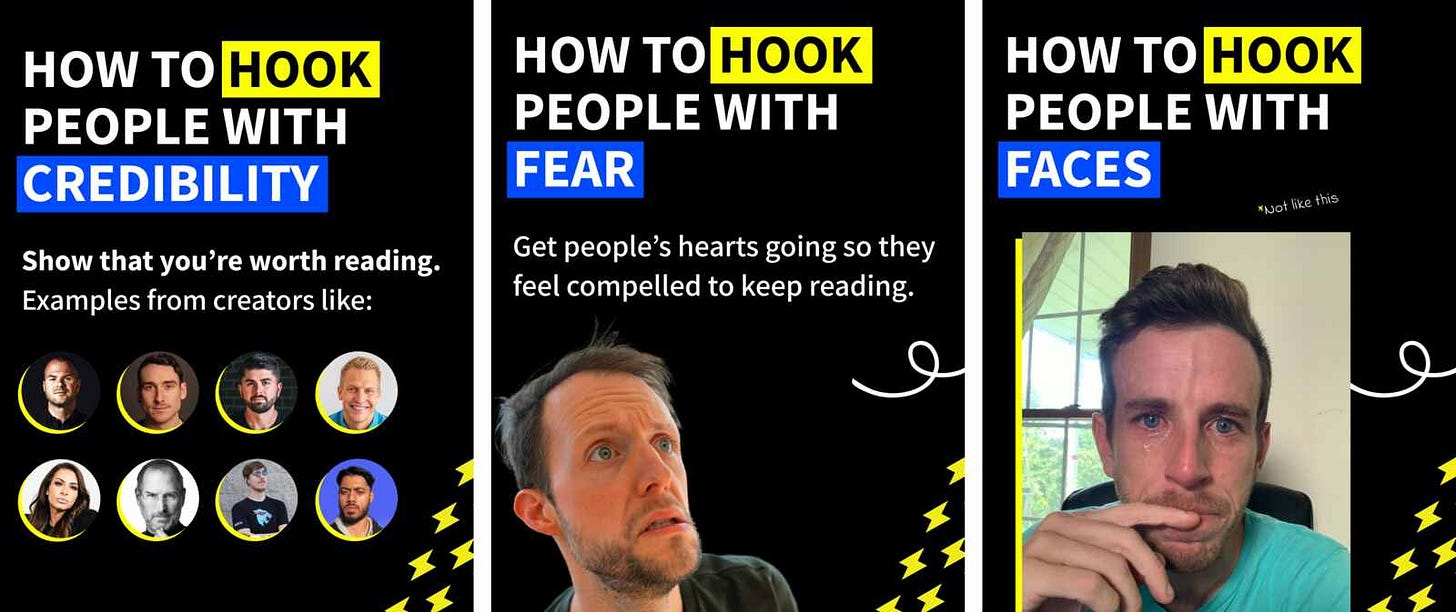Content Themes: Create content way easier
How to easily make fun and memorable content.
Look closely at successful creators, and you'll notice something.
For example, Mr Beast’s YouTube channel:
Just in 20 videos, you can see a few repeat formats:
$1 vs $XXXXXXXX [thing]
[something] vs [adjective] [something else]
I [verb] X [thing]
World's [superlative] [thing]
Somebody surviving something and winning money
You'll also notice that his thumbnails have recurring elements:
Crazy bright colors and high contrast
Goofy grin
Overly big head
Insane scenarios
Looks like a teenage boy created it
And the videos themselves follow a certain structural pattern:
First, some larger-than-life wacky concept evokes an “I can’t believe someone is doing this” reaction.
He immediately yells the title of the video (to reinforce that the video will deliver on what the thumbnail promised)
The camera then makes a dynamic move (zoom out to show the scale of something)
He introduces the schtick for the video
He engages you throughout by layering on additional wacky, surprise elements and keeps teasing the big payoff later in the video
There will likely be a cameo from someone like Gordon Ramsay or Tom Brady
His bonehead friends do something dumb
He does an ad read right at peak action, so you don’t skip it,
He teases an upcoming video
He brings in some fans or shows people recognizing him
He does some sort of giveaway if you subscribe to his channel
Pick a random video; I guarantee it’ll check nearly every box above.
Reasons to re-use formats
Reason #1: People know what to expect
If someone likes $1 vs $1,000,000 Hotel, they’ll probably like $1 vs $XXX House, Yacht, Boat, Vacation, Car, and Job. This is smart because:
It's easy for the YouTube algorithm to know what to recommend next.
It's easy for your audience to decide what to watch next. It's de-risked that they're going to like it.
People like comfort, simple as that. They’ll watch the 200th episode of Seinfeld for the 10th time rather than watch that exciting new show because Seinfeld is comfortable. They know it. It’s safe. They won’t be surprised. At the end of a long day, that’s important.
Reason #2: It de-risks the investment
This is why there are 5,000 Marvel movies.
People loved The Avengers; let’s make The Avengers 2 (and so on).
Every piece of content requires time, effort, and resources. What worked in the past is likely to work again. So, it’s infinitely less risky to repeat rather than radically innovate.
Warning: You still need to be creative and do innovative stuff. People will get annoyed when you get to the 7th Avengers if it feels too similar each time.
Reason #3: It’s a lot less effort + systematizable
For years, I wrote a newsletter for over 100,000 founders where I shared unique 3 startup growth tactics (it’s since changed formats).
It followed a repeat format:
Intro → sponsors → 3 growth tactics → news → meme → outro.
This format was very liberating:
I wasn’t reinventing the wheel each time.
I know what a "growth tactic" looks like
We trained team members to help write tactics, grab news, and find relevant memes.
I like to say it's more like "filling in the blanks."
Just like Mr. Beast can train his team to develop and execute ideas given the repeatable format that he knows works.
The goal of content themes
The goal is to find repeatable content themes and formats that allow you to:
Keep going deep on your core topics and ideas while keeping it interesting.
Be creative and innovative, so you create something interesting and unignorable. Creativity often needs boundaries.
Train your audience on what to expect from you.
It’s funny because people naturally gravitate to a repeat theme and structure when they create podcasts or newsletters. But when it comes to social content, they don’t. Every time they post, it’s kinda random.
Let’s dive into some examples of the various kinds of themes you can have:
Examples of content themes
There are a few ways you can get thematic with content. It can be days of the week devoted to different content types or subtopics. Or they can be more creative.
Let’s dive into both, leaving the best for last.
Day of the week themes
A key way to systematize is to plan the type of content you create on specific days of the week. This is particularly important if you sell multiple products or topics to cover.
You can either do it based on content types or subtopics:
Content-type/format themes
For example, you can theme days of your week for post types to make it easier to design:
Mon: Meme
Tues: Cheatsheet
Wed: Client Win
Thurs: Analytical Carousel
Fri: Promote Newsletter
To further systematize content creation, dive into the 10 types of posts.
Subtopic themes:
With the high-level topic of “building an audience:”
Mon: Hooks
Tues: Systemization
Wed: Monetization
Thurs: Creator teardown
Fri: Motivation
Creative content themes:
This is more of a grab bag of creative ideas. It’s hard to formalize it
Will Nitze: "Monday Morning Shower Thoughts"
You can get creative with the format like Will’s “Monday Morning Shower Thoughts:”
These goofy posts made my week and caused me to DM and befriend Will.
This format is perfect for Will because he naturally has weird observations and thoughts. It works because it leverages his unique superpowers.
Jenny Hoyos: "[Fast Food Chain] for $1"
Jenny Hoyos had a recurring series where she recreated fast food items for $1 on YouTube Shorts. She made over 10 of them and got over 150M combined views.
Ad Professor: Curated ads and invented ads
The Ad Professor’s entire content strategy is doing curated lists of creative ads:
And creative ads of his own creation:
Me: “Analysis of top hooks”
Here, I found a repeat format to analyze top hooks from creators:
The next step in reusing this format is analyzing all the top posts from specific creators.
Me: “How to do [hook type] hooks”
I created a template to re-use for each of the 10 Ways to Write Hooks.
Note: Whenever I talk about hooks, I promote either an article or a lead magnet related to hooks. This allows me to take people off the social platform (an audience I don’t own) to my newsletter (an audience I do own). This has led to over 5,000 subscribers to Demand Curve’s newsletter.
How to find your content themes
Here are the general steps:
Figure out your high-level topic and audience
Ex: Audience building for entrepreneurs wanting more leads.
Figure out the goal for your content
Ex: Build trust with and close potential customers
Define the core content pillars (subtopics) within that topic. Examples:
Systematizing content creation
Figuring out your topic
Turning attention into intention
Determine the format of content you want to create based on your skills:
Video
Text only
Carousels
Cheatsheets/infographics
Long-form articles
Podcasts
Learn the 10 types of posts you can create:
Figure out, generally, what types of posts you will do each day using either the content-type or subtopic day themes.
Experiment with different styles of posts until you find something you really enjoy making and people seem to enjoy consuming.
Try to templatize it in a way and continue to improve and experiment with it.
Study what others are doing and see if you can adapt and innovate on it for your specific audience and niche.
Remember to have fun.
If you have fun making it, they’ll have fun going through it.
Make sure to work on your copywriting
You must be a sharp copywriter for your content to perform.
Here are a few resources I’ve created to help:
10 Ways to Write Hooks. I’ve studied hundreds of viral hooks and found 10 fundamental ways to hook people.
The 10 types of posts and how to use them. Use these to systematize your content creation process.
10 Copywriting Tips. One of my top articles and LinkedIn posts.
7 Copywriting Frameworks (with cheatsheet). So you don’t have to start from scratch; these frameworks make “fill in the blanks.”
Breakdown of the top 30 hooks on LinkedIn. Each hook is color-coded to show the smart thing each creator did to hook you.
Breakdown of the top 26 hooks on Twitter.
An analysis of the top 20 female creator's hook. Due to the total lack of gender diversity of the top 100 creators, I created one for the top 20 women.
An analysis of 12 ways to hook with Thumbnails. A hook can be an image, too.
Cheers folks!
If you like this post, share it with a friend who’s trying to grow on LinkedIn or X!
How I can help you grow:
Need advice on growing your startup? Book a consultation call with me.
Need to run ads? We’ve built the ads agency for startups.
Need to hire an agency/freelancer? We’ll match you with a vetted partner for $0.
Sign up for my premium newsletter to access my post archive.
😍
– Neal










Hello Neal,
I became a paid subscriber some 10 months ago -- in large part because I got a few good ideas from things you'd written. I'm writing to ask if you're still active here. I haven't seen anything new from you in some time.
I hope you're doing well!